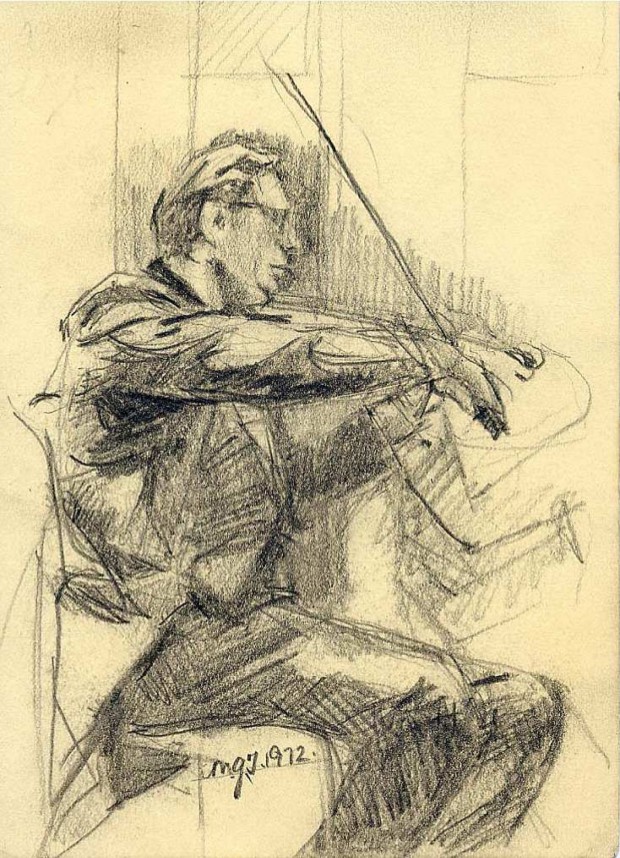I suggest that all art should be a reflection of the tensions that naturally arise from the daily experience of living. Whatever specific form of art we choose to be creative in, these tensions will not only be outlined but the art form will normally resolve the tensions into a satisfactory solution.
Thus, in music, through the socially accepted production of sound, we are able to stimulate recognisable feelings and experience their satisfactory description and exploration. In music, the sounds themselves are the objects but can only be objects of sense.
In learning to play an instrument, we are able to recreate the composer’s thoughts and become involved in the feelings of people throughout the relevant age. The execution of the sound is limited by the industrial development of the times. Thus early music, plainsong, is limited to a single melody line using the voice. When we use our voice, the tones rise and fall in pitch fluctuating in volume according to whether we are in greater or lesser condition of excitement. In moments of greater excitement our muscular tension increases, bringing about, involuntarily, the parting and consequent stretching of the vocal chords. The more rapid the expulsion of air from the lungs meeting the vocal chords the higher the pitch. In moments of controlled excitement, intensely emotional words could be uttered in a low, whispered voice. Music from its very inception is an art built on the determining principles of the melodic and rhythmic basis of language. If it is to be truly great, it cannot deny this cultural heritage in principle. In not obeying this principle, the music will be inhibited and certainly eclectic and in the end will represent false feelings. The composer’s consciousness, his thinking and feeling will give rise, at best, to musical creations which are masterly sense translations. The logical structure of music is self-sufficient and it does not refer to outer reality directly in a logical way. Its pseudo-logical rigour of scales and chords replaces the logical rigour of external reality related to a logical external world by its qualities of space and time. Space is created by the movement of the scales so that a melody describes a curve in space as well as in enduring time. Harmony enriches and gives depth to melody and is as much a temporal element as is a scale and a chord. Harmony and melody individualise music of various periods by its degree of complexity so reflecting and creating new degrees of complexity so creating new qualities in its development. As the technical achievements of following generations proceed, music becomes more complicated in its ability to reflect the increasing advances in the development of a more sophisticated standard of living and the ability to produce instruments in bulk meeting the needs of an expanding population.
Just as each art form enjoys its own specific characteristics so each instrument is able to offer different sound colours which need special study according to which instrument we have chosen. From within the wind instruments we have a choice of brass and woodwind sound colours and just as much choice of colours from within the string and percussion sections.
No one can account for the reasons behind which instrument we choose to play, but we assume one is excited by the specific sound of the chosen instrument.
In learning an instrument we are not only able to understand the nature of the instrument, but we are able to learn in a disciplined and satisfying way a greater understanding of ourselves and our social standing; we assume a place in society giving an inner strength related to our cultural heritage.
